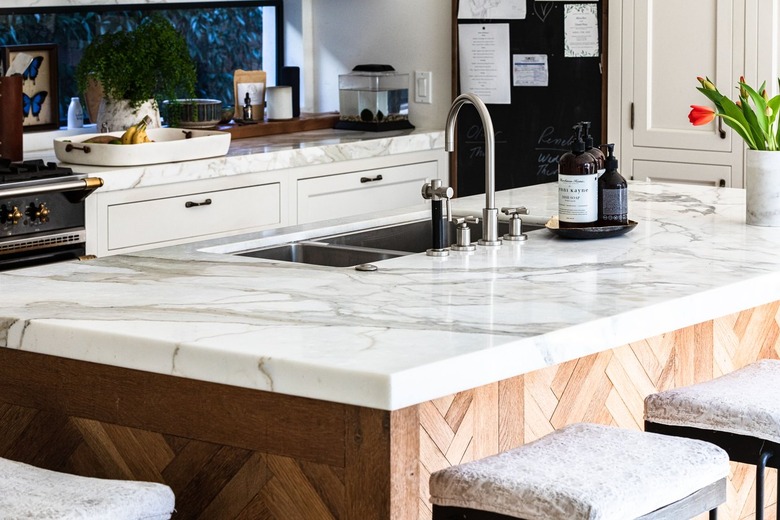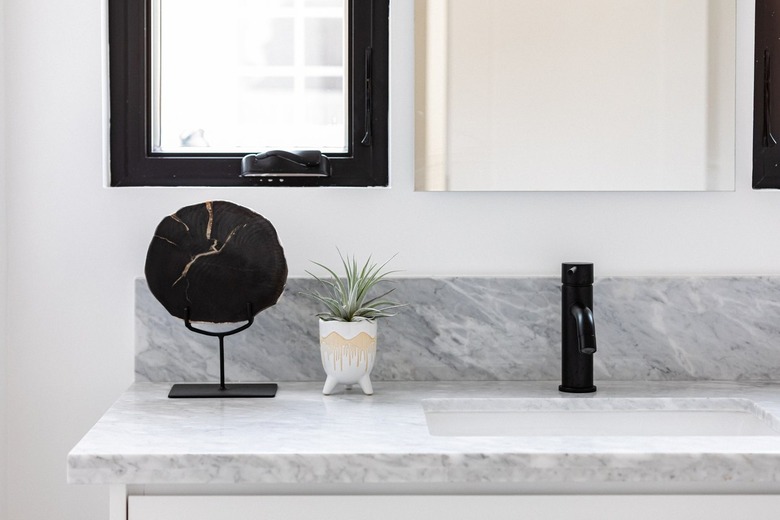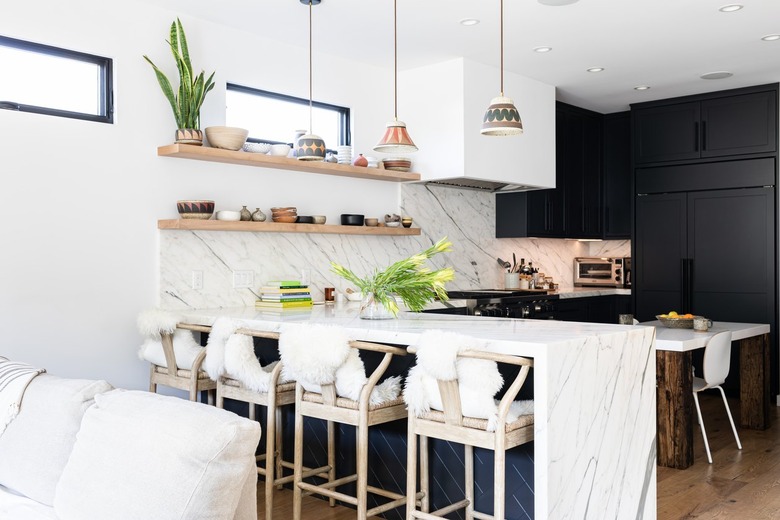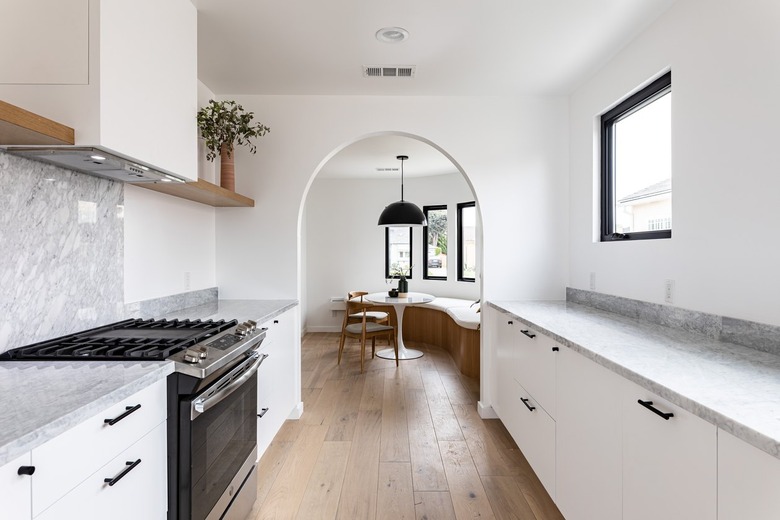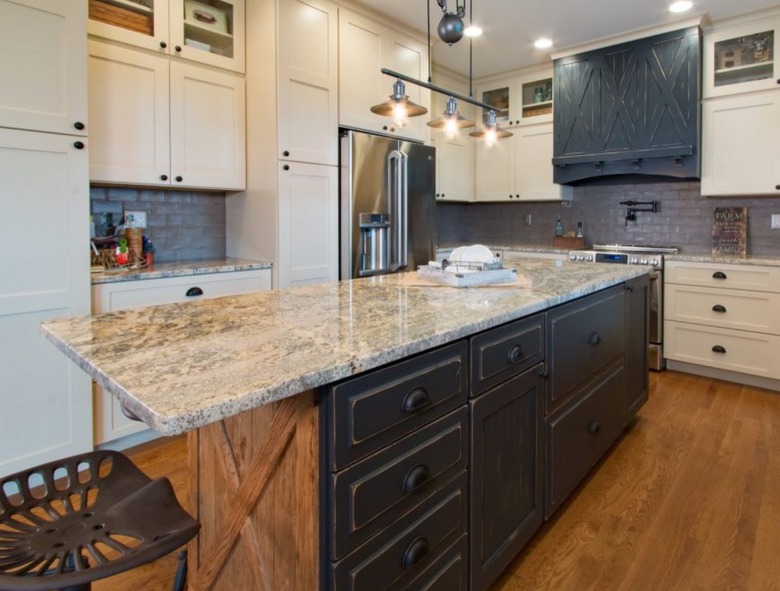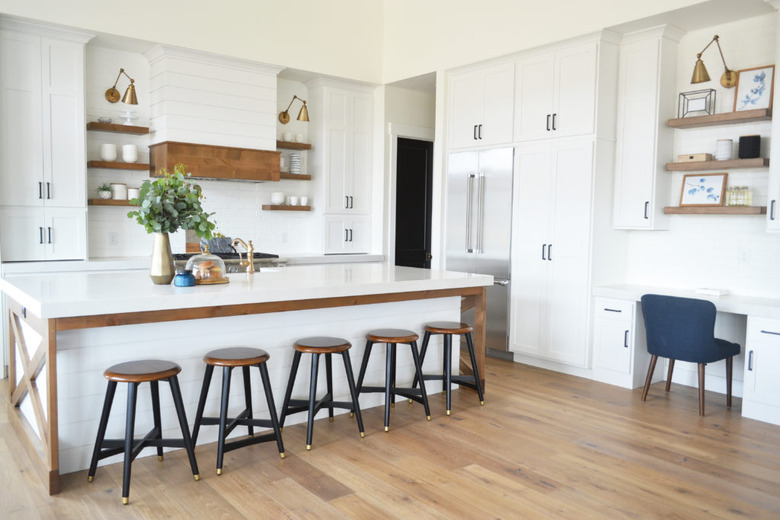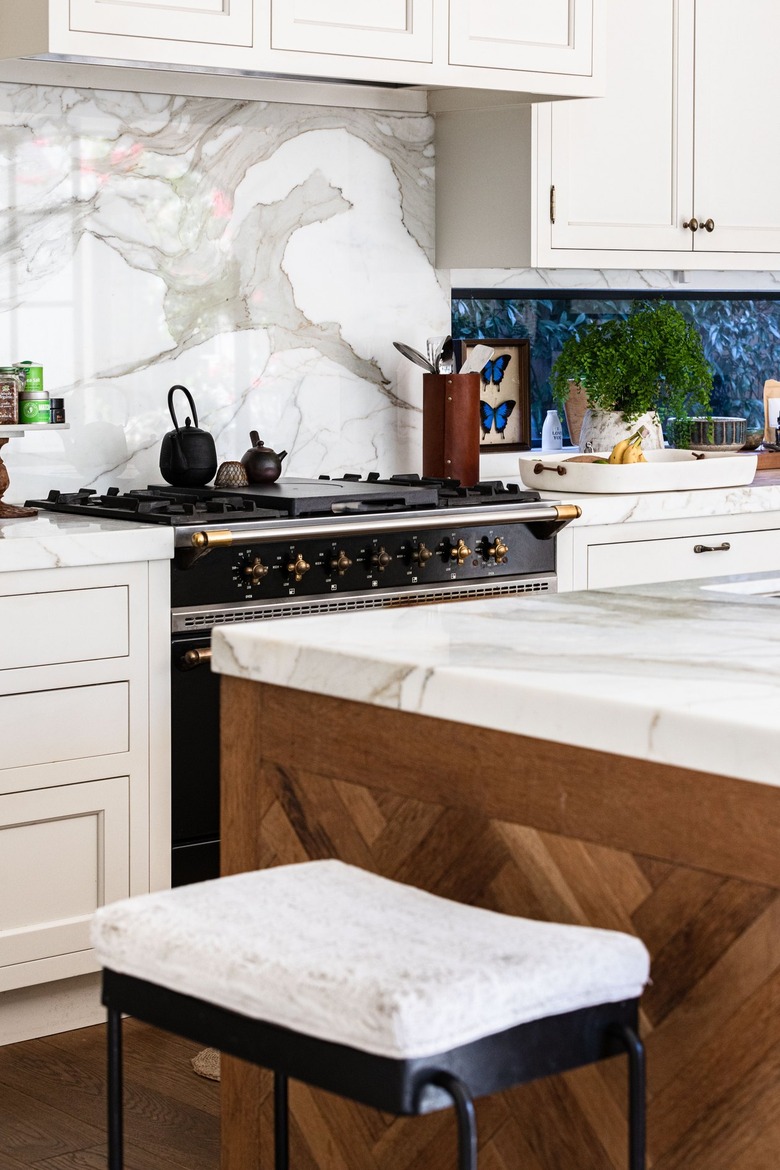Marble Vs. Quartz: Which One Is Better For Your Kitchen?
While there are a wide variety of kitchen countertop materials on the market, there's a good chance that the culinary work surfaces you've been drawn to feature cultured marble or quartz. Both options are man-made or engineered stone, and capable of replicating the elegant look of a natural material, like marble or granite, without the colossal weight, price tag, and upkeep. So what's the difference between cultured marble and quartz?
Cultured marble is a material comprised of stone particles and resins. When combined, they produce a wide range of colors and patterns to mimic marble or granite. Unlike quarried natural stone, cultured marble can be cast in molds to create specific pieces like sinks and bathtubs, as well countertops and backsplashes.
Quartz is comprised of 90% quartz, and the remaining 10% is made up of resins, polymers, and an assortment of pigments. One major difference is that quartz is pressed into sheets, while cultured marble can be poured into molds.
Feeling a bit overwhelmed? Not to worry. From appearance to durability to cost, we're breaking down everything homeowners need to know to finally put the quartz versus cultured marble countertops debate to bed.
Appearance
Quartz is available in a seemingly infinite range of color options and patterns. Unlike cultured marble, it tends to appear more uniformly patterned and not as random. The slabs can be cut to size, which means there will be visible seams.
Cultured marble is also available in many different colors and patterns. It looks more like real marble than quartz, with veining that is less uniform in pattern. It is customized for each project, so the countertops are usually seamless. Cultured marble is cured in molds that are coated in a clear gel. Once dry, and removed from the mold, the clear gel acts as a glossy finish or protective top coat.
Durability
In terms of durability, quartz is the clear winner. The nonporous surface does not stain easily and is almost entirely heat- and scratch-resistant. Although it comes with a clear protective layer, it's best to protect it from hot pots and pans with pads or trivets. Homeowners should also avoid using abrasive sponges or rags when cleaning.
Cultured marble, on the other hand, is still a relatively tough countertop option, but it can scratch easily and is also susceptible to damage from extreme temperatures. Like quartz, it comes with a clear protective layer, but it is weaker, so resealing it periodically is a must. Additionally, it's very important not to expose the material to heat, use abrasive cleaners, or spill acidic solutions such as lemon juice.
Maintenance
Maintenance of quartz is pretty easy. You may have to remove hard water stains from time to time, but overall, a gentle cleaning solution will keep your countertops in tip-top shape since it is virtually nonporous.
Cultured marble needs a bit more TLC though. There are a variety of ways to keep this material looking its best, ranging from professional to DIY options. Just keep in mind, cultured marble can scratch easily and must be handled with care.
Value and Cost
The cost of quartz countertops is significantly higher than cultured marble. According to Caesarstone, it can be anywhere from $50 to $100 per square foot, not including installation. The price might be high, but you're getting ultra-durability and low maintenance. And let's face it, it will last for many years to come. This is why it's such a popular choice for high-traffic areas like kitchens and bathrooms.
Cultured marble countertops are less expensive, coming in at about $65 per square foot on average. And although easier on the wallet, they do require more maintenance since the material is more delicate. This is why it might be a better option for surfaces that receive less wear and tear like mantels, shelves, or even the top of an end table, as opposed to your new countertops. However, if you think you can be diligent about taking care of them, the cost savings might just be worth it to you in the end.
Installation
In a high-end kitchen, quartz countertop installation can cost anywhere from $3,000 to $7,500 depending on how big your space is and how intricate the area is to cut. However, you can save some money by doing the actual installation yourself with these DIY tips.
Cultured marble countertops are also expensive to install. For example, in a kitchen design with about 50 square feet of counter space, you can expect to pay an average of about $3,000. Unlike quartz, this is definitely a material you want to have professionally installed. Cultured marble can crack and scratch during the installation, so you want someone who really knows what they're doing.
Bottom Line: Marble or Quartz?
Now that you've learned the ins and outs of marble vs. quartz, it may be time to make a final decision on which surface is right for your kitchen remodel. If budget is not a factor, quartz or even granite might be the best countertop materials for you because they are both durable and low-maintenance.
However, if you're trying to stick to a budget, cultured marble will provide you with the beautiful look of real marble, or even granite, countertops at a lower cost. Your counters will, however, need to be treated with care on a regular basis.
Now, let's take a look at the pros and cons of each to simplify your decision.
Pros of Cultured Marble
- More affordable than marble or other engineered materials
- Available in a wide variety of patterns and colors
- Can be customized
- Glossy, satin, and matte finishes are available
- Can be molded into sinks
- Seamless
- Easy to clean
- Nonporous
- Can scratch easily
- Not heat-resistant
- Can stain
- Yellowing can occur
- Not all manufacturers offer a warranty
- Wider range of colors and patterns than marble or granite
- Won't chip or crack easily
- Heat-resistant
- Stain-resistant
- Easy to clean
- Low-maintenance
- Glossy, satin, and matte finishes are available
- Can be expensive — it's similar in cost to real marble, granite, slate, or concrete
- Seams are noticeable
- Not as heat-resistant as granite or concrete
- Harder to customize the edges
- Cannot be molded into a sink
